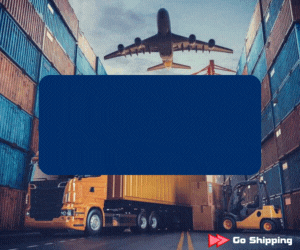Climate change concerns have caused companies all around the world to reassess their shipping strategies. As clients become more interested in sustainable solutions, supply chain companies are adjusting their methods to meet demand.
Mario Cordero, CEO of the Port of Long Beach, talked to Container News about a collaboration of leading maritime goods movement stakeholders, including the Californian ports of Los Angeles and Long Beach, as well as the port of Shanghai in China, and some of the world's largest shipping lines, to develop a Green Shipping Corridor Implementation Plan Outline to accelerate emission reductions on one of the world's busiest container shipping routes.
- Which cutting-edge technologies will be used in the green shipping corridor?
The Green Shipping Corridor will develop digital shipping tools to drive efficiency, demonstrate and advance new and innovative vessel technologies, increase the availability of sustainable fuels, set goals for cargo owner partners to contract with carriers to use zero lifecycle carbon emission shipping services and create metrics for all partners to track decarbonization progress.
- The green shipping corridor plan calls for more investment in energy-efficient shipping technology as well as a faster transition to alternative, low-carbon fuels to reduce the carbon footprint of marine transportation. Which fuels will be available?
While we seek to reduce emissions in partnership with port operators through our strategies that promote the use of cleaner technologies, we are technology and fuel-neutral – we do not mandate specific technologies or fuels.
Shipping lines are investing in ships that can use a variety of low- and zero-carbon fuels. For example, major ocean carriers including Maersk, CMA-CGM and COSCO Shipping have on order several new methanol-powered ships to be added to their fleets. The Green Shipping Corridor efforts are critical to ensure that all stakeholders involved in the transition to these cleaner fuels, including ports, shipping lines, fuel producers, and bunker suppliers are prepared to support the adoption of these cleaner fuels.
- The fleet’s average age is rising and this is another concern for the environment since older ships pollute more. By number of ships, the current average age is 21.9 years, and by carrying capacity 11.5 years, according to UNCTAD data. Will the ocean carriers deploy new boxhsips?
It is expected that both newbuilds and vessel retrofits may be required to support the transition to low- and zero-carbon fuels. For example, Maersk recently had their maiden voyage of the world’s first container vessel powered by green methanol, Laura Maersk. It’s a 2,100-TEU capacity feeder vessel. And they have indicated they have ordered 24 additional methanol vessels for delivery between 2024 and 2027. Evergreen announced they ordered 24 ships that can use green methanol.
COSCO announced they ordered 12 container ships that can use green methanol.
In addition, the San Pedro Bay Ports recently executed an agreement with the South Coast Air Quality Management District to retrofit two vessels with low-pressure exhaust gas recirculation and a multiple fuel conversion system. Each Port will put US$300,000 towards the project and the vessel retrofitted with the multiple fuel conversion system will be able to run on liquefied natural gas and ammonia. In addition, the multiple fuel conversion system will be capable of running other fuel types with minor modifications.
Finally, of the 920 vessels we show on order, 137 are methanol powered (15%), 210 are LNG powered (23%), and 196 are scrubber fitted (21%). The remainder are conventional ships.
- What is the progress of Port of Long Beach in reducing emissions?
In July of this year, IMO revised its GHG Strategy to reach net-zero GHG emissions from international shipping by or around 2050. The Port of Long Beach is known worldwide as an industry leader in advancing cleaner cargo movement. Our recent emissions inventory found that since 2005, diesel soot is down 91%, nitrogen oxides have decreased 63%, and sulfur oxides have decreased 96%, all while container throughput increased 36%. We’ve achieved these dramatic improvements in air quality in partnership with the Port of Los Angeles through the Clean Air Action Plan, a landmark strategy to safeguard public health by improving air quality. The last CAAP update in 2017 set goals of cutting greenhouse gas emissions by 40% below 1990 levels by 2030 and 80% by 2050. Those targets are closely tied to two other CAAP goals: an entirely zero-emissions cargo-handling equipment fleet by 2030 and a zero-emissions heavy-duty trucks fleet by 2035. We’re very optimistic about hitting those goals and already have the largest fleet of zero-emissions cargo-handling equipment in the nation, at 19%. The Technology Advancement Program has a multimillion-dollar annual budget to nurture the development of clean air technology.







